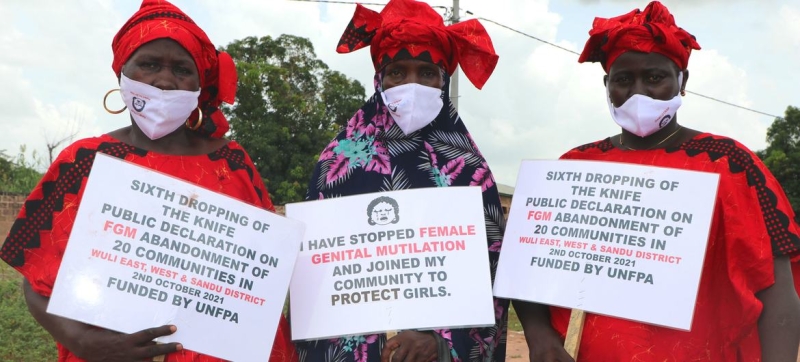
Most often, girls under the age of 15 are circumcised, although such operations are also performed on adult women. ‘Holiday circumcision’ undermines fight against female genital mutilation Health
Female circumcision, officially called “female genital mutilation,” has long been recognized as a gross violation of human rights and a form of gender-based violence. The practice is banned in many countries, but not everywhere. Girls and women are forced to cross borders to undergo such operations. Even the concept of “vacation circumcision” appeared.
The UN Human Rights Office tried to study the routes and scale of such movements. This is a difficult question, since it is often not possible to obtain accurate statistics. This is especially true in the Middle East and Asia, where data and research on the extent and prevalence of this practice is still lacking.
What is female circumcision?
The World Health Organization (WHO) defines female genital mutilation as “all procedures involving the partial or complete removal of the external female genitalia or other injury to the female genital organs for non-medical reasons.”
It is most often performed on girls aged from infancy to 15 years, although such operations are performed on adult women.
This practice can be found in many countries of the world. According to the United Nations Children’s Fund (UNICEF), in 31 countries for which information is available, more than 200 million girls and women alive today have undergone such operations.
The study’s authors estimate that female circumcision is practiced in at least 60 other countries. For example, in 2023, an estimated 4.3 million girls could be subjected to female genital mutilation. If these violations of women’s rights are not stopped, 68 million girls will be subjected to female genital mutilation by 2030.
It is painful and dangerous
Immediate complications from female genital mutilation may include severe pain, excessive bleeding, swelling of genital tissue, infection, urinary problems, hemorrhagic shock and even death.
Long-term effects may include urinary tract infections, bacterial vaginosis, painful periods, scar tissue and keloids, painful sexual intercourse, increased risk complications during childbirth and death of newborns, as well as psychological disorders.
Read also:
Cases of “female circumcision” in the North Caucasus: following our publications
Border crossing
Even if the practice is prohibited in a country, girls and young women in Africa, for example, travel to places where it is practiced legally or simply turn a blind eye to such violations: from Kenya to Ethiopia, Somalia, the United Republic of Tanzania and Uganda, from Burkina- Faso, Côte d’Ivoire, Mauritania and Senegal in Mali.
It’s not just about Africa. For example, in the European Union, it is estimated that more than 600,000 women experience the effects of female genital mutilation, performed at home or abroad, and a further 190,000 girls and women in 17 European countries are at risk of undergoing the practice in the near future.& nbsp;
In the United States of America, it is estimated that half a million girls and women have had or are likely to undergo such surgery.
In Australia, a government study puts the figure at 53,000, while civil society groups believe the figure could be as high as 200,000. It is estimated that 11 girls a day in Australia are subjected to female genital mutilation. Thousands of girls who have undergone this procedure live in Canada. This list can be continued.
“Holiday circumcision”
The so-called “vacation circumcision” – this is when families travel with their daughters to their home countries and communities to undergo this practice. The summer school holidays are a common time to perform female genital mutilation to allow healing to occur before the girl returns to school.
There are also reports of girls being subjected to FGM in Australia, Canada, the UK and the United States. During the COVID-19 pandemic, there have been reports of an increase in such procedures due to school closures in Europe.
International Standards
The Council of Europe Convention on Preventing and Combating Violence against Women and Domestic Violence (Istanbul Convention), ratified by 45 countries and the European Union, recognizes female genital mutilation as a form of gender-based violence.
Article 38 requires States Parties to take the necessary legislative and other measures to ensure that female genital mutilation is an offence committed on their territory, on board a ship flying their flag, by one of their nationals or a person permanently resident in the territory their territories.
A number of governments are also taking specific measures to protect girls and women at risk of transnational FGM. For example, in 2015, the United Kingdom introduced special “protection orders” to protect potential victims and survivors of such procedures.
Recommendations
The authors of the report offer specific recommendations to ensure that these and other measures are strengthened where they already exist and implemented in other countries. The experts also call for strengthening and developing regional and global cooperation on combating female genital mutilation.
